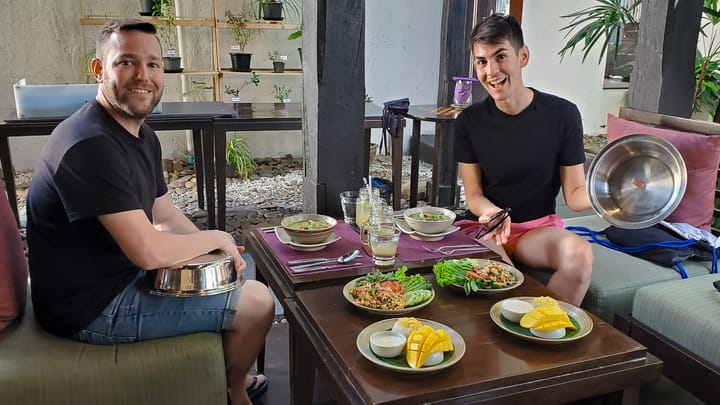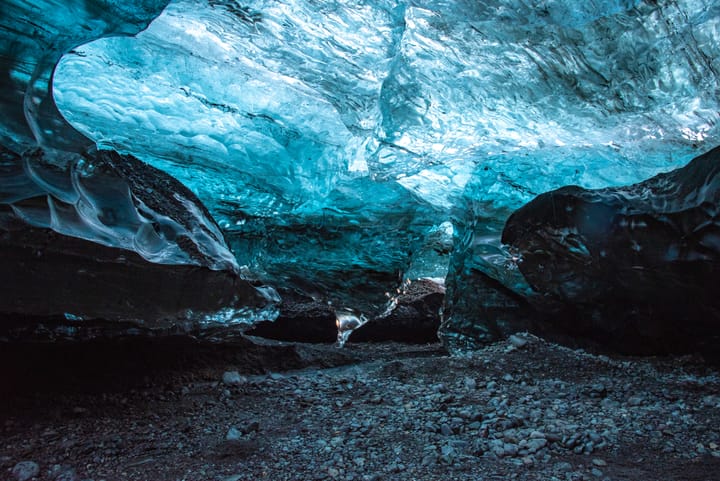A chronicle of resilience
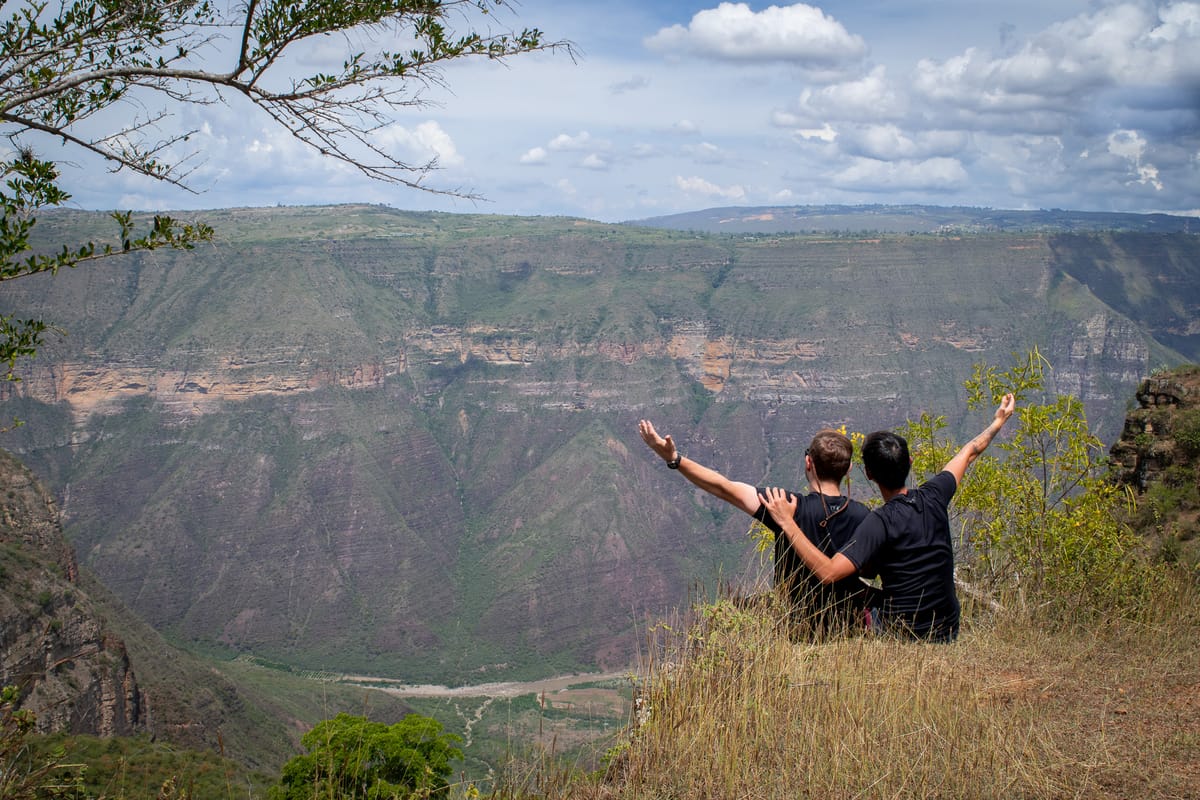
In the embrace of Colombia's diverse landscapes, from the serene heights of Zapatoca to the rustic charm of Barichara, unfolds a trek that is as much about discovery as it is about endurance – the "El Camino Real" or "Camino de Lengerke". This historic trail, carved by the vision of German engineer Georg von Lengerke, took us on an unforgettable journey through varying terrains, cultures, and epochs.
Our expedition was a tapestry of experiences, woven through the lush greenery of forests, the challenging ascents of sun-drenched canyons, and the cobblestone streets of Colombia's most beautiful town. We navigated paths that tested our limits and reveled in moments of unexpected serenity, finding along the way the enduring spirit of local communities and the whispers of history.
This narrative is more than a travelogue; it's a chronicle of resilience, a testament to Colombia's beauty, and an homage to the paths that connect us to stories of the past. It's an exploration of what it means to embrace the journey, to step into the unknown, and to discover the richness of the world beneath our feet.
Our adventure commenced with a rhythmic journey from Bucaramanga to Zapatoca. The landscape outside our window transformed, painting a canvas of Colombia's diverse geography. Upon arrival, we sought refuge in a quaint hotel, resting in anticipation of the trek ahead.
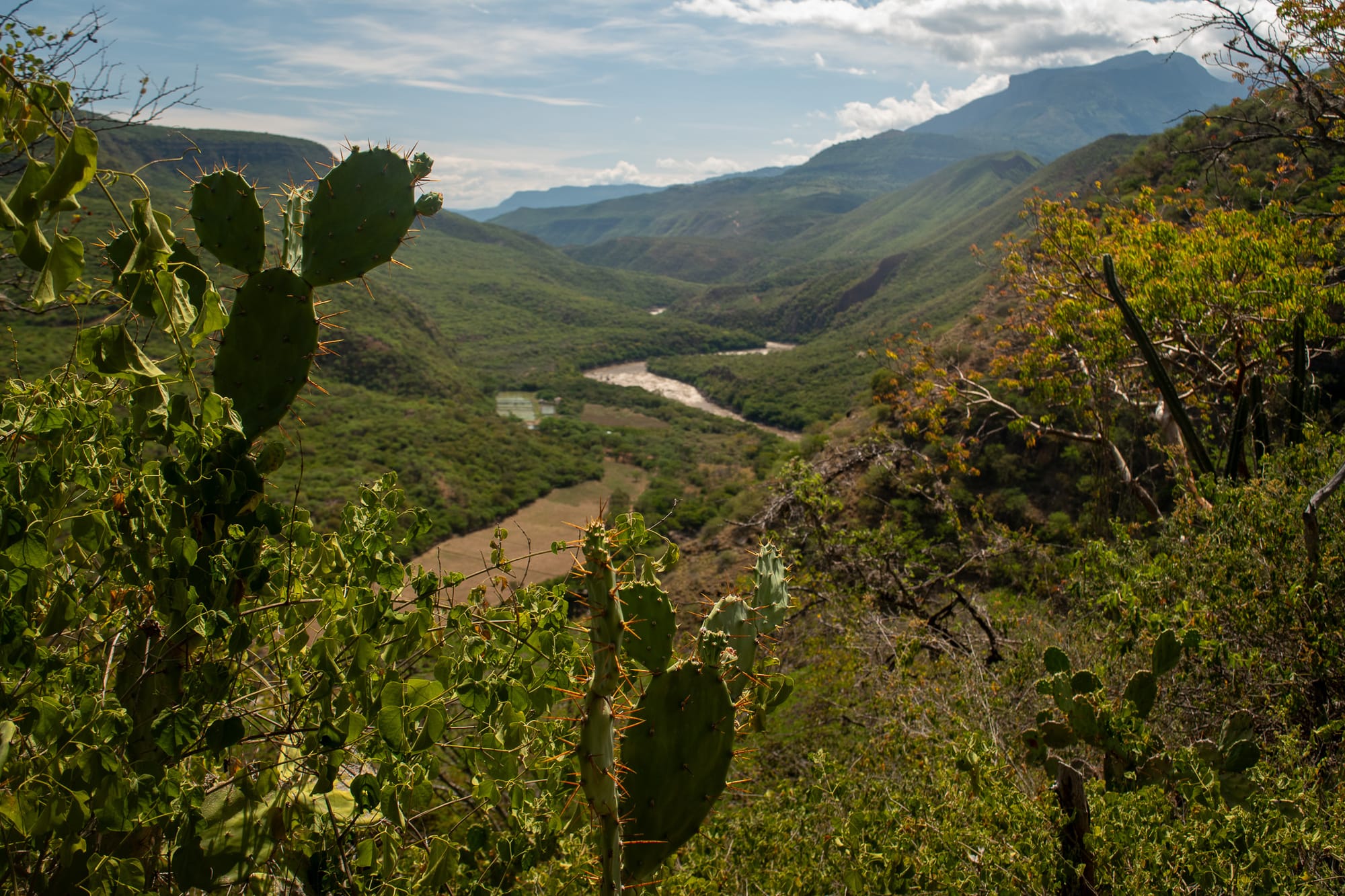
As the first light of dawn touched the skies, we embarked on our trail from Zapatoca. At 1,720 meters above sea level, the cool, fresh air was invigorating. The path unfolded before us, revealing a tapestry of diverse landscapes. Our hike began gently, but as we descended, the environment dramatically transformed, offering a glimpse into Colombia's natural diversity.
The trail to Puente Ruedas was a journey through varying terrains, a blend of the reclaimed wild and maintained paths. As we approached our first major landmark, the terrain and climate began to shift drastically. We entered the segment we named "Lengerke's Hell," a daunting 900-meter stretch leading up to the river at Puente Ruedas. This part of the trail was a steep, unshaded ascent, where the sun beat down mercilessly, turning the environment into a furnace.
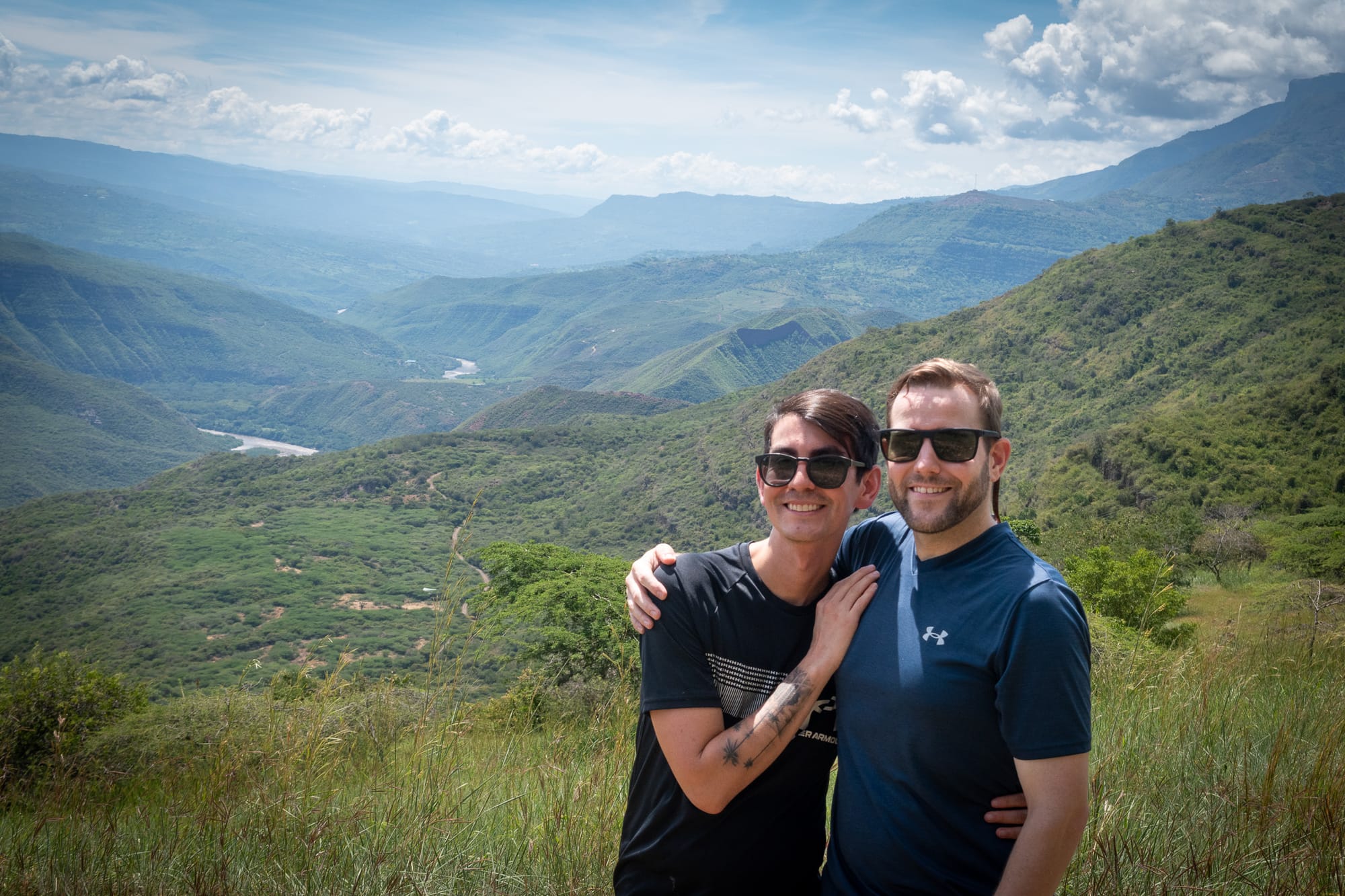
By the time we reached the river at Puente Ruedas, our water reserves were alarmingly low. We were down to our last drops, a concerning predicament considering we still had 6.2 kilometers to reach our destination, Guane. To make matters more challenging, this final leg of the trail was entirely uphill, presenting us with a grueling test of endurance.
The dry, harsh conditions of "Lengerke's Hell" had taken their toll. Dehydration set in, manifesting in dry mouths and dwindling energy. Our once light-hearted banter gave way to a tense silence, broken only by the sound of our footsteps and labored breathing. The severity of our situation was clear: we were in a remote area, far from immediate help, and dangerously low on water.
In a desperate attempt to seek assistance, we found ourselves without cell service, a stark contrast to the connectivity we had experienced earlier. The irony of the situation was not lost on us – connected to the world yet isolated in our time of need. It was a poignant reminder of nature's unpredictability and our vulnerability within it.
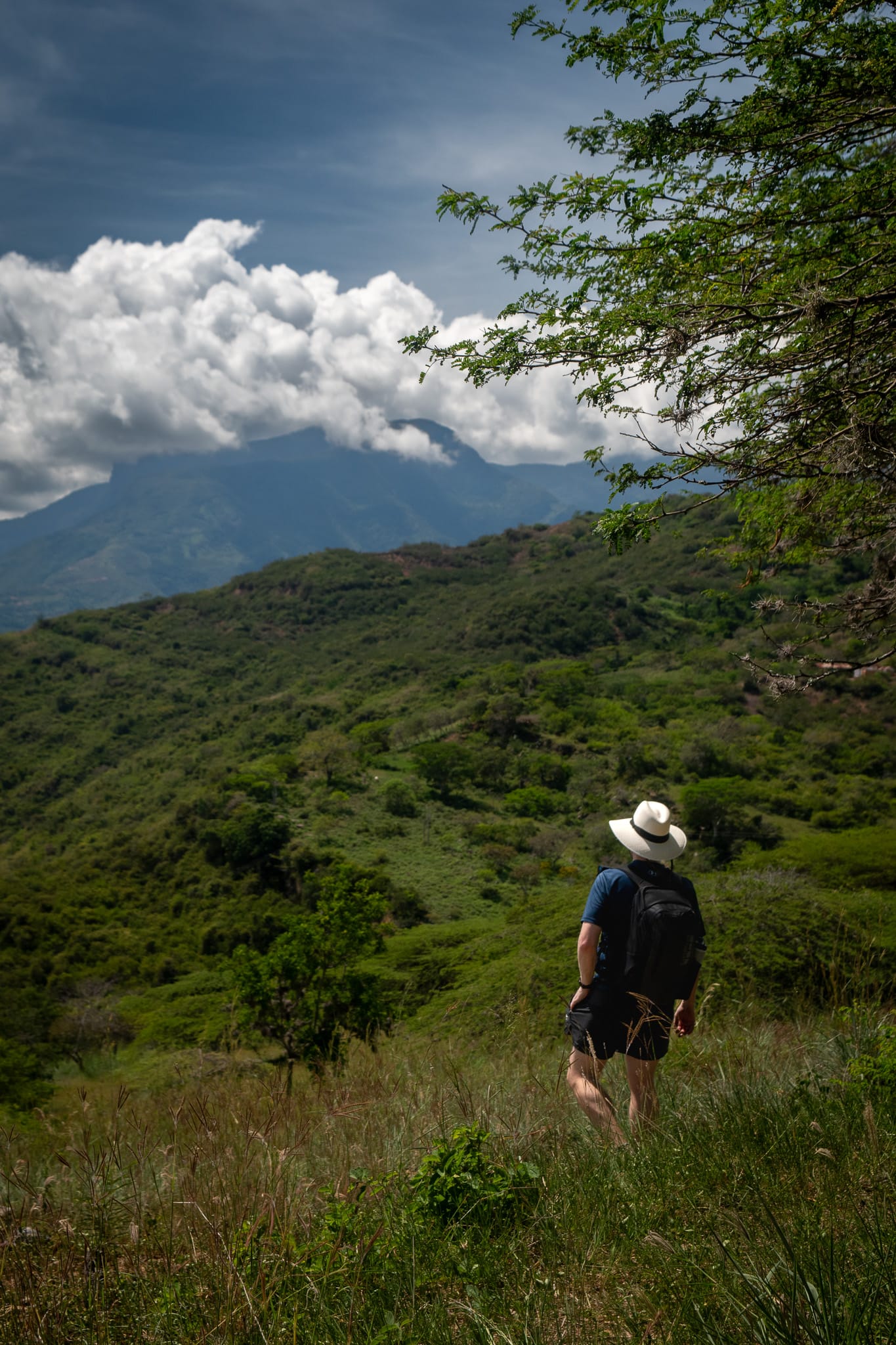
After what seemed like an endless struggle, we finally caught a faint signal. We hurriedly called for a Tuk Tuk, each minute of waiting feeling like an eternity under the scorching sun. When our ride finally arrived, it was a moment of immense relief. The final stretch to Guane was a mix of exhaustion, gratitude, and reflection.
Arriving in Guane, our priority was to rehydrate, grateful for the simple luxury of a cold drink. This experience was a profound lesson in preparation and respect for the environment. It underscored the importance of being prepared for all eventualities, especially when embarking on a journey through such diverse and challenging terrains.
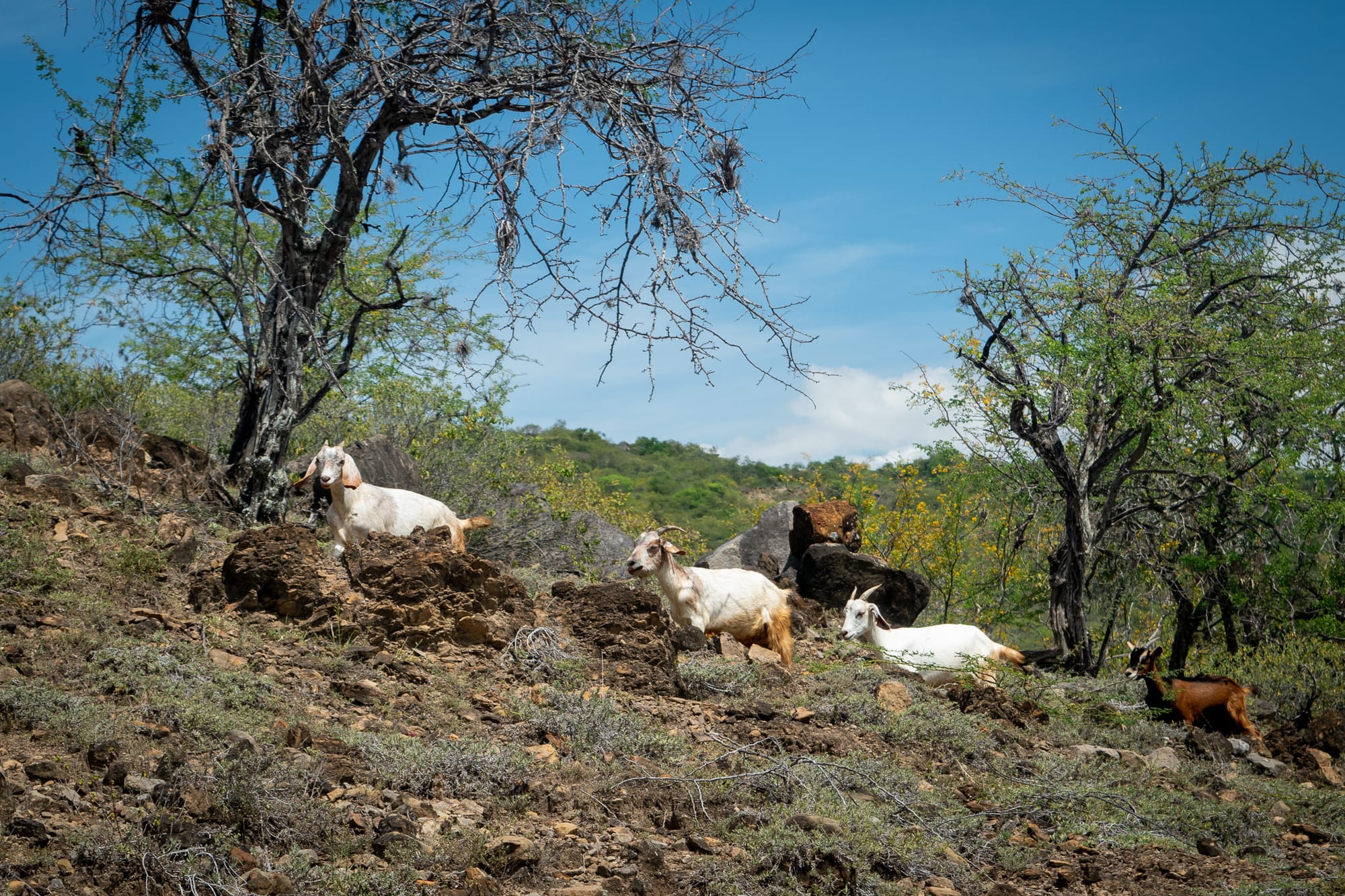
After the day's intense journey, we arrived in Barichara, ready to unwind. Our initial plan to stay at Casa Barichara Boutique had to be altered due to off-season renovations. Fortunately, a recommendation from our waiter at Independencia led us to the welcoming doors of Casa Guati Hotel.
Upon checking in, we were greeted with a refreshing Guarapo cocktail, an homage to the traditional Colombian drink made from fermented sugar cane. This sweet, tangy beverage was the perfect nightcap, introducing us to a unique aspect of local culture. Exhausted from the day's challenges, we soon retired to our room, anticipating a full day of relaxation in Barichara.
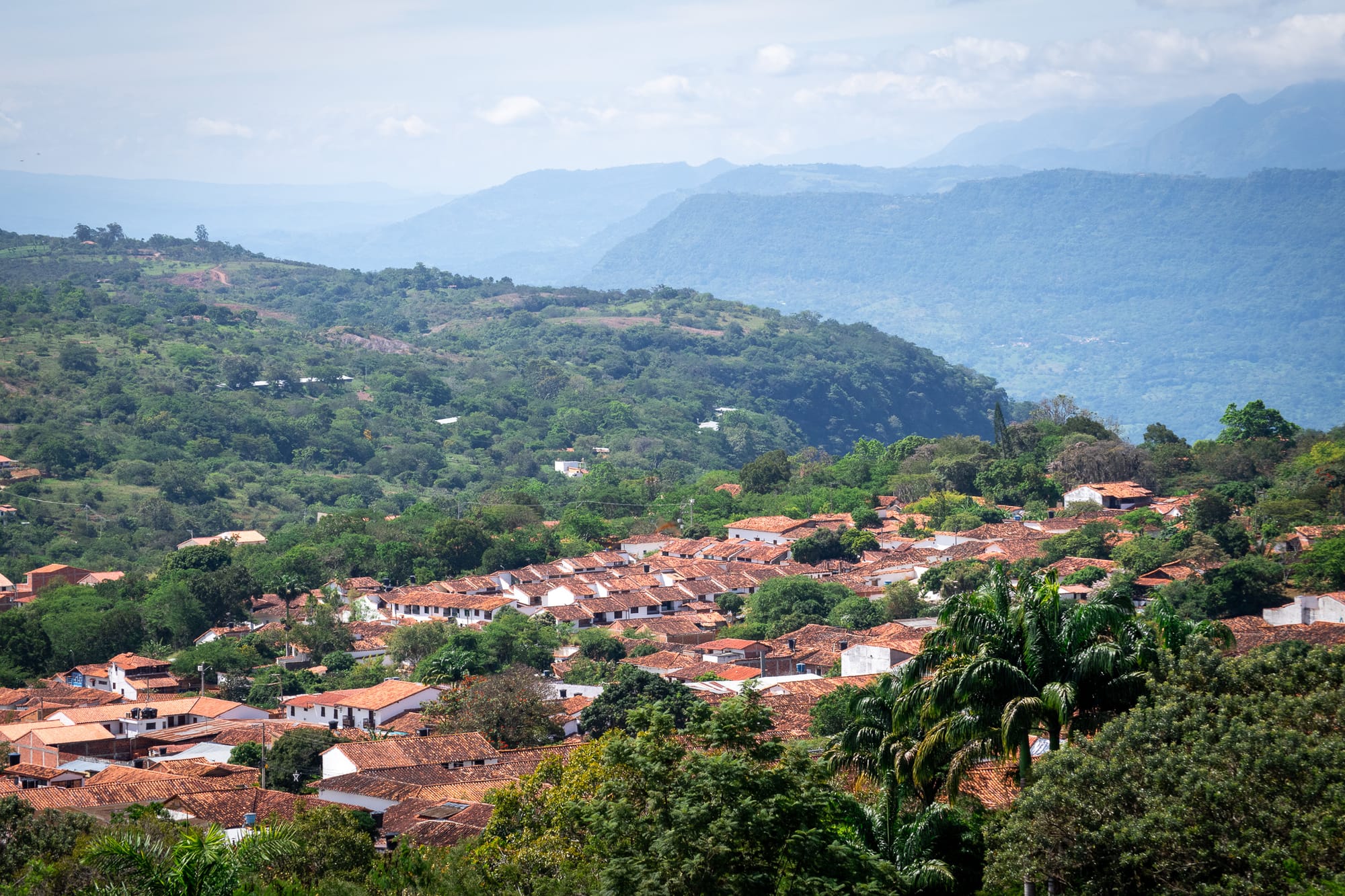
Waking up in Casa Guati Hotel, we were greeted by a stunning view of Barichara's picturesque streets and terracotta rooftops, set against lush green hills. The beauty of this town, often described as Colombia's most beautiful, was immediately apparent.
The day was dedicated to unwinding and soaking in the serene atmosphere of Barichara. We spent leisurely hours by the hotel's pool, basking in the peaceful ambiance and the warm Colombian sun. The tranquility here was a stark contrast to the ruggedness of the Lengerke Trail.




Our culinary journey took an unexpected turn at lunch. We had previously savored the delights of Mija, a restaurant we had come to love for its exquisite take on Colombian cuisine. However, with Mija closed for a private event, we found ourselves at Elvia. This accidental discovery proved to be serendipitous, as Elvia amazed us with its revolutionary approach to traditional dishes, creating a memorable dining experience.
As the day transitioned into a beautiful evening, we relished the sunset from the poolside. The sky turned into a canvas of vibrant colors, casting a warm glow over the charming town. This moment was a blend of nature's beauty and the comfortable setting of Casa Guati, marking a perfect end to a day of relaxation.
Rejuvenated by the tranquility and beauty of Barichara, we prepared for the continuation of our hike. Our stay at Casa Guati, with its remarkable infinity pool and the town's enchanting ambiance, was a blissful and memorable interlude in our journey.
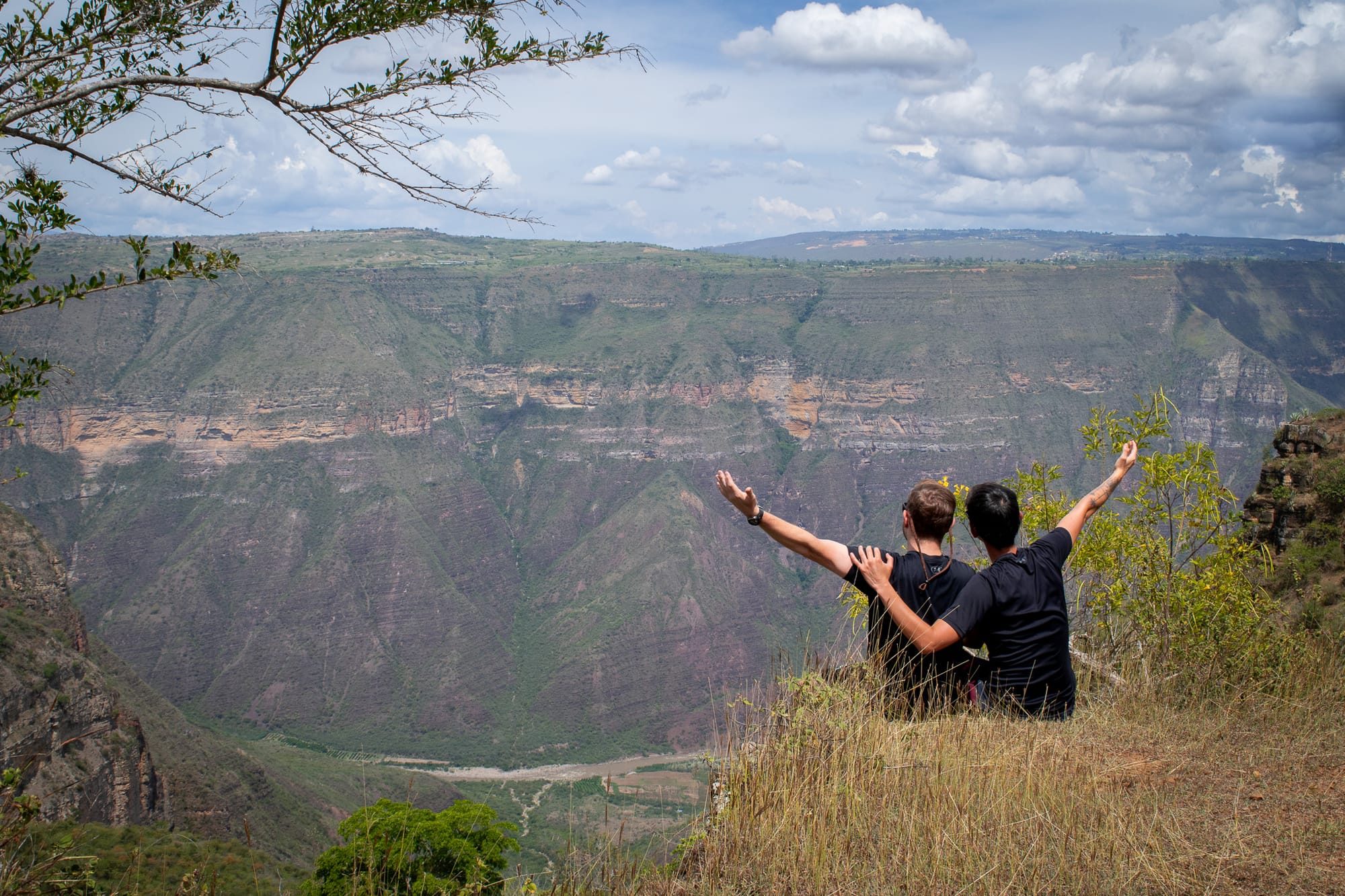
Our fourth day began with a reluctance to leave the comfort of Casa Guati Hotel. The blissful relaxation of Barichara had worked its magic, leading us to oversleep and start our day later than planned. Embracing this leisurely pace, we took a Tuk Tuk from Barichara's main square to Villanueva. There, we decided to alter our hiking route for a more scenic experience, beginning at the picturesque Mirador de Alto de Marta. This decision cut out five kilometers from the original 15-kilometer hike, a change we welcomed.
The initial part of the hike was a stark contrast to the challenging terrain of the previous days. We were greeted by lush, green landscapes, showcasing the fertile land of the canyon's upper reaches. This verdant start was soothing, but as we progressed, the terrain took a dramatic turn. The trail plunged into a steep descent, marking a rapid change in altitude over just six kilometers.
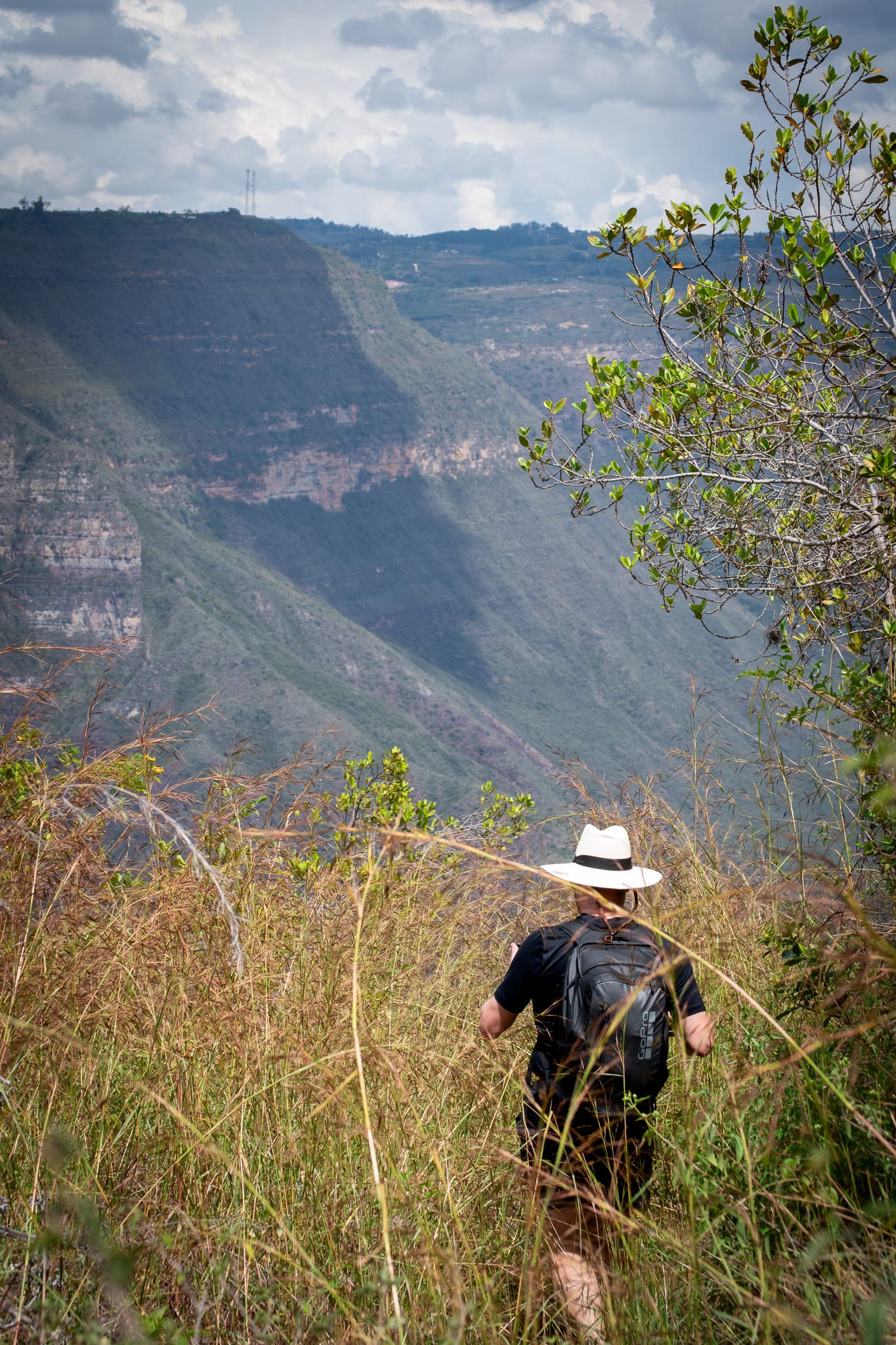
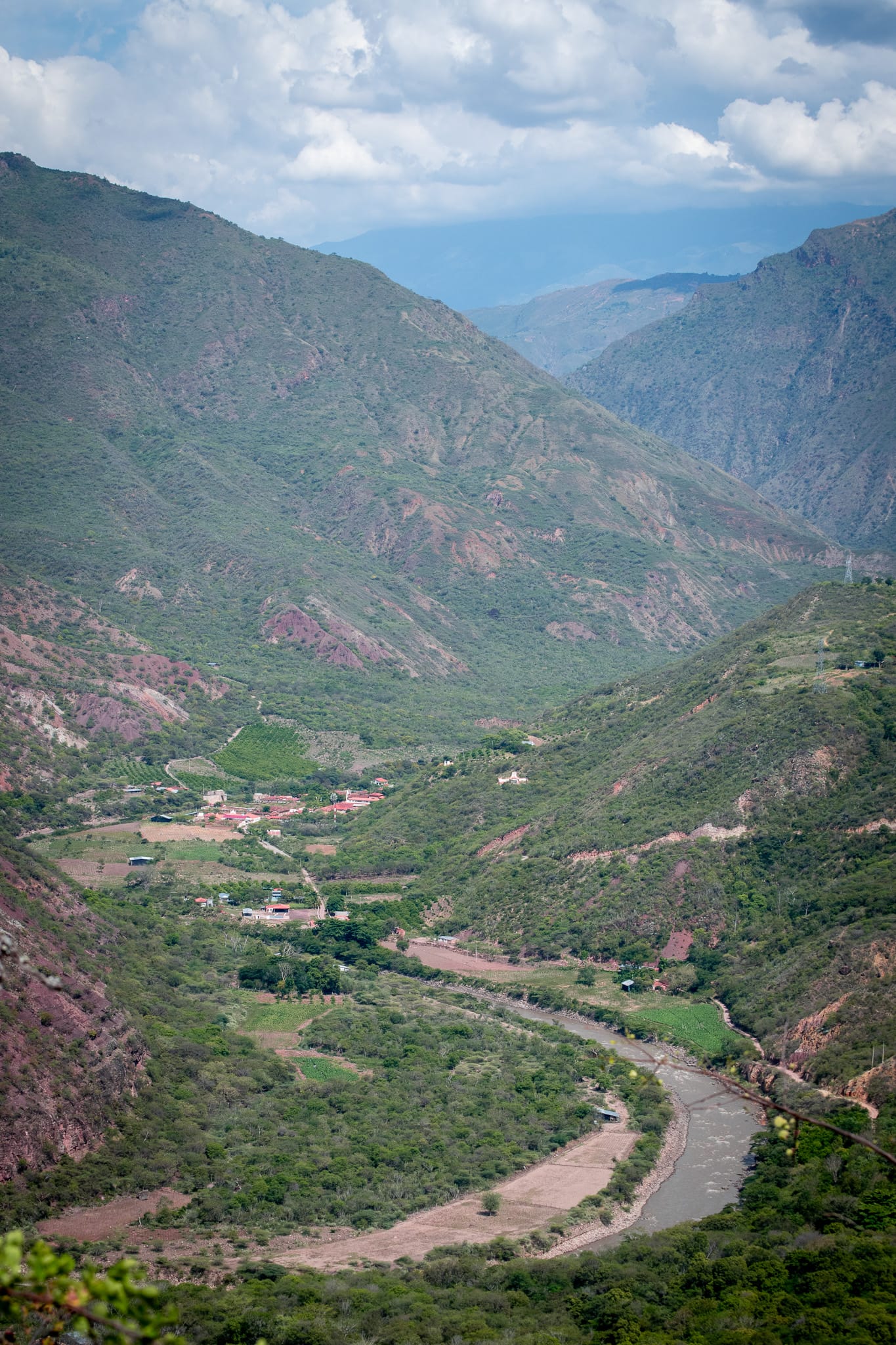
Despite the ruggedness, El Camino Real was well-marked, providing us with a clear path to follow. However, the trail's condition was challenging, with loose gravel covering a significant stretch, testing our footing and resilience. Yet, the awe-inspiring views along the way made every step worthwhile. This time, armed with ample water, we found the journey much more enjoyable.
Reaching the bottom of the canyon, we arrived in Jordan, one of Colombia's less inhabited towns, known for its tobacco cultivation. The heat here was more intense, a sharp reminder of the diverse climates of Colombia. Our destination was the Tamarindo Ecolodge, located two kilometers from the town center. Nestled amidst the arid landscape of Jordan, the lodge was a surprising oasis, boasting beautiful gardens meticulously cared for by Jennifer, the owner. Her dedication to creating this tranquil haven was evident in every corner.
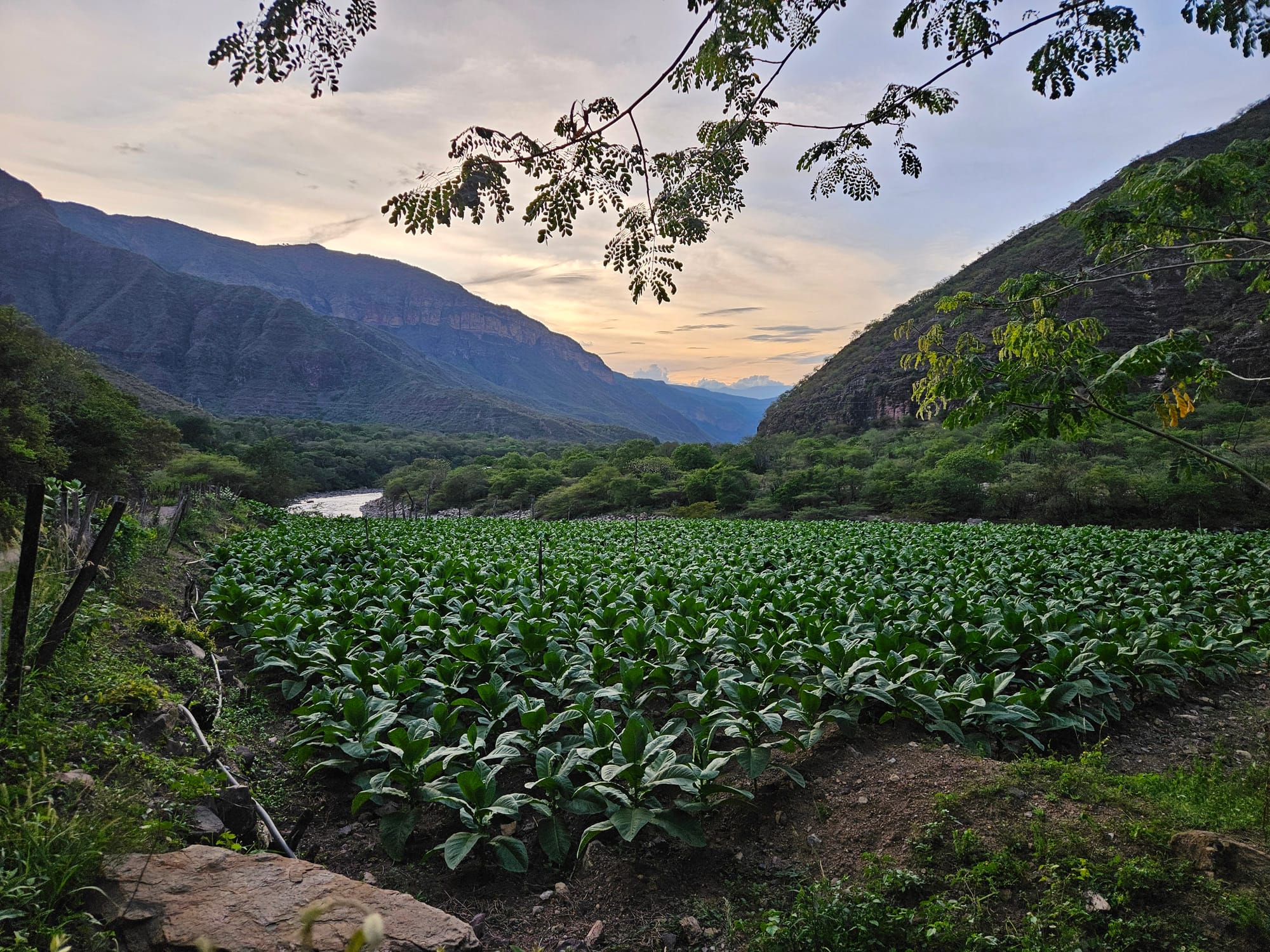
To our delight, the lodge called us while we were en route, inquiring about our estimated time of arrival and meal preferences. Upon arrival, we were greeted with a savory meal – Thai Chicken Curry for me and Beef Ra for Neil. The flavors were a testament to the lodge's culinary excellence, and we were already looking forward to returning for their signature dish, Cabrito (Goat).
Our hike that day took approximately four hours, allowing us to reach Jordan with enough time to savor the lodge's amenities. We indulged in the refreshing pools, explored the nearby river, and wandered around the quaint town. The Tamarindo Ecolodge, a family endeavor born from the love story of an Irish woman and a Colombian man, was a testament to the allure of this rugged land.
Our day's journey was a blend of natural beauty, challenging terrain, and the unexpected comfort of the Ecolodge. It was a reminder of the surprises and delights that travel brings, especially when venturing into less-trodden paths.
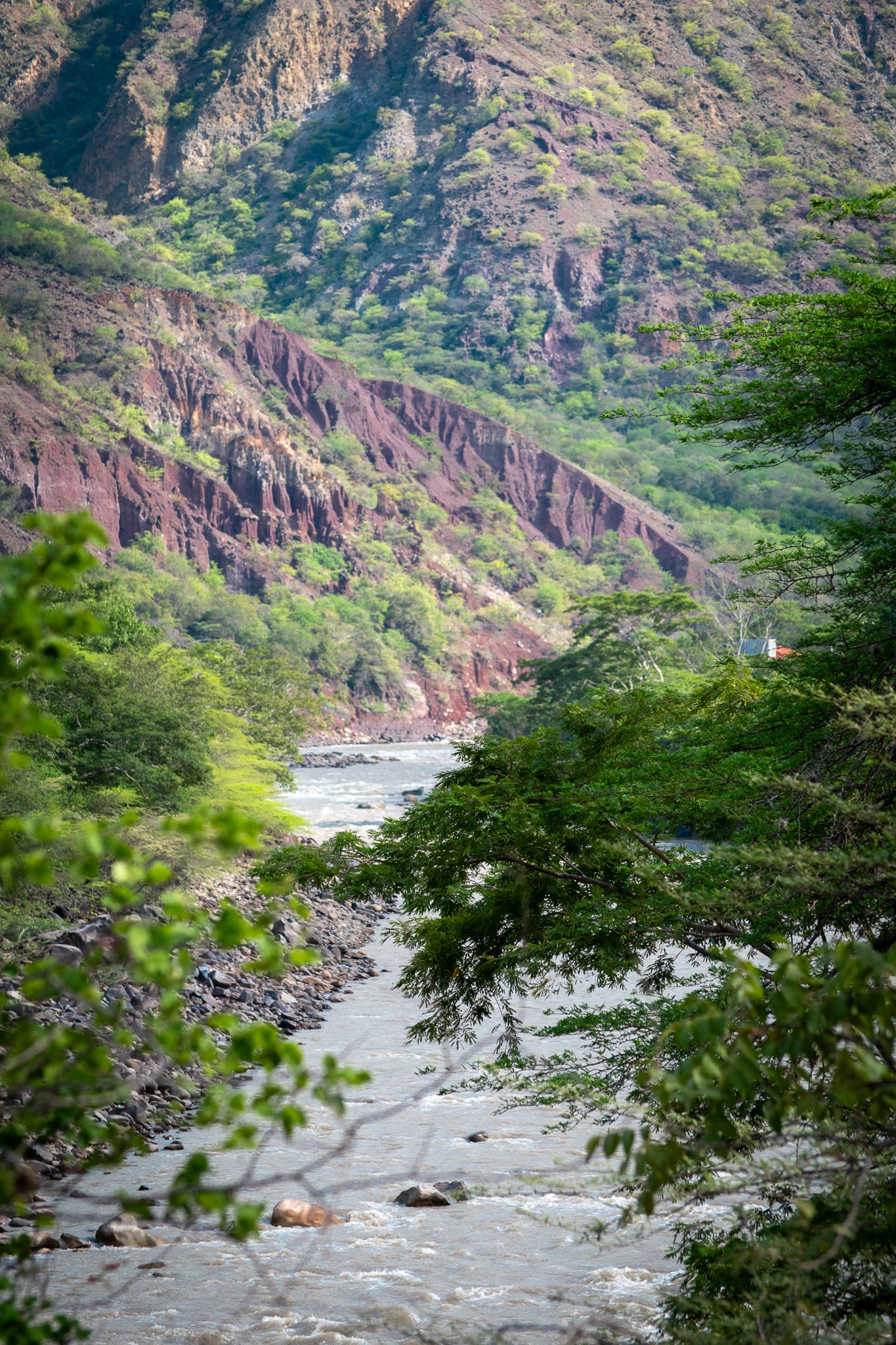
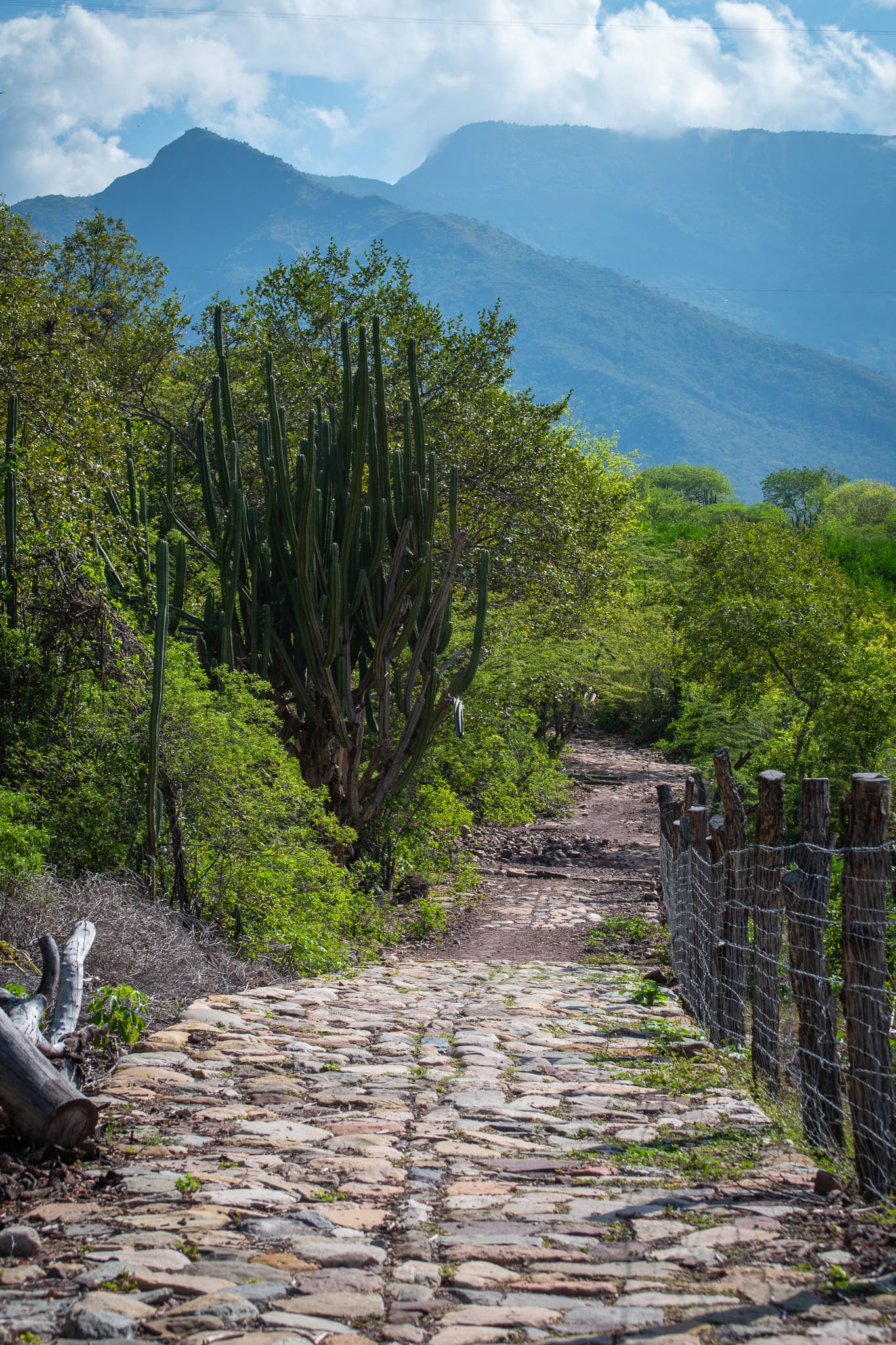
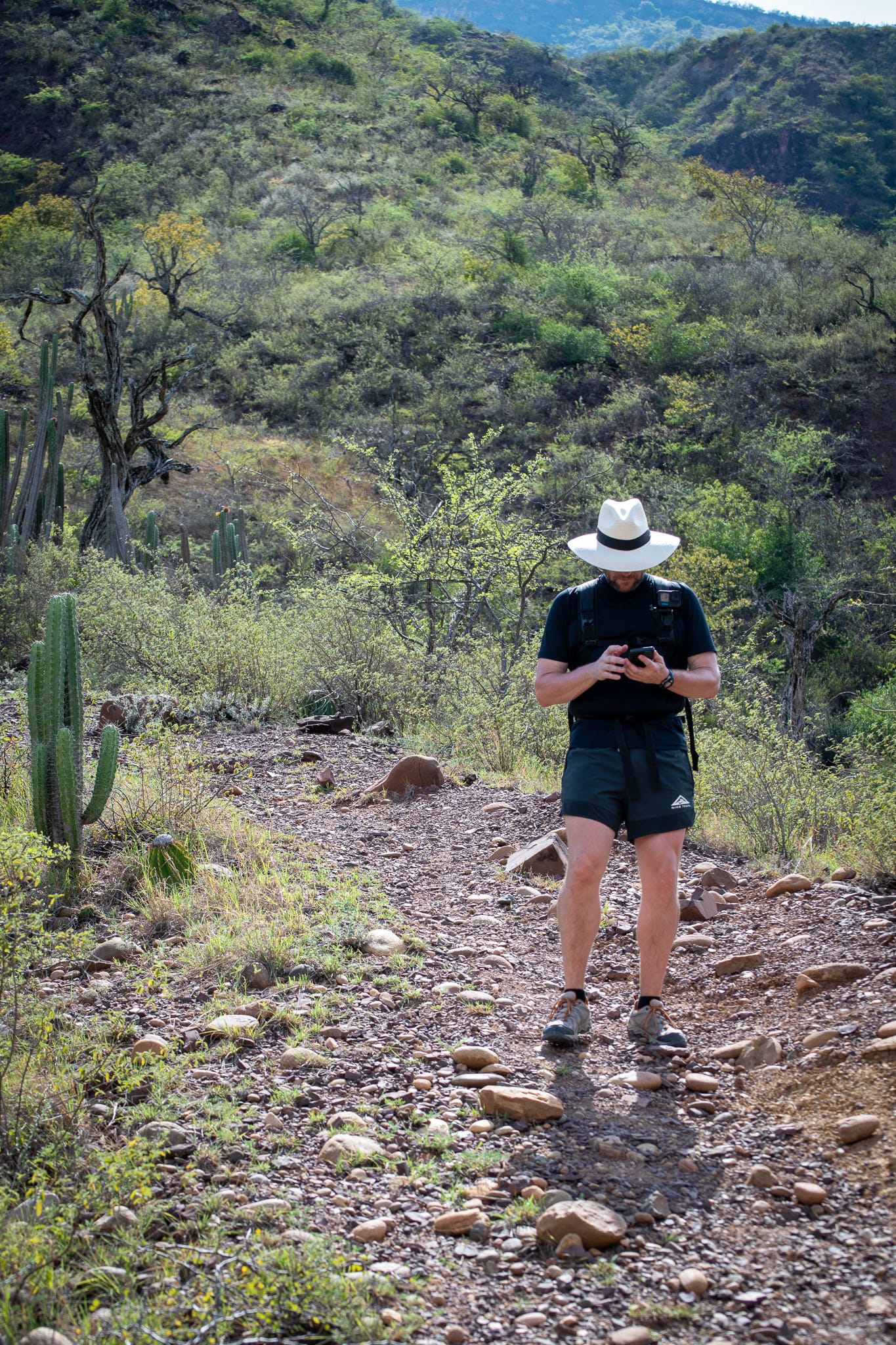
As dawn broke on our final day, we embarked on the last leg of the Camino de Lengerke, a trail imbued with historical significance and natural beauty. Our path from Jordan to Los Santos, a six-kilometer trek, led us through one of the hottest yet most well-preserved sections of the canyon.
Our journey began at the historic Lengerkes Bridge, a symbol of the trail's rich heritage. Georg von Lengerke, a German engineer and adventurer, played a pivotal role in the development of this region. After moving to Colombia in the mid-19th century, Lengerke significantly contributed to the growth and modernization of the Santander region. His legacy is visible in the infrastructure, including the network of paths that form the Camino de Lengerke, and the first toll bridge in the country that we crossed. These trails, once vital for trade and communication, now serve as a connection not only between towns but also to the past.
The trail to Los Santos was a continuous uphill challenge, offering sparse shade but frequent rest points. These spots provided not just physical respite but also opportunities to engage with locals who regularly traverse this historic path. The Camino de Lengerke is still a lifeline for these communities, bridging towns and sustaining traditions.
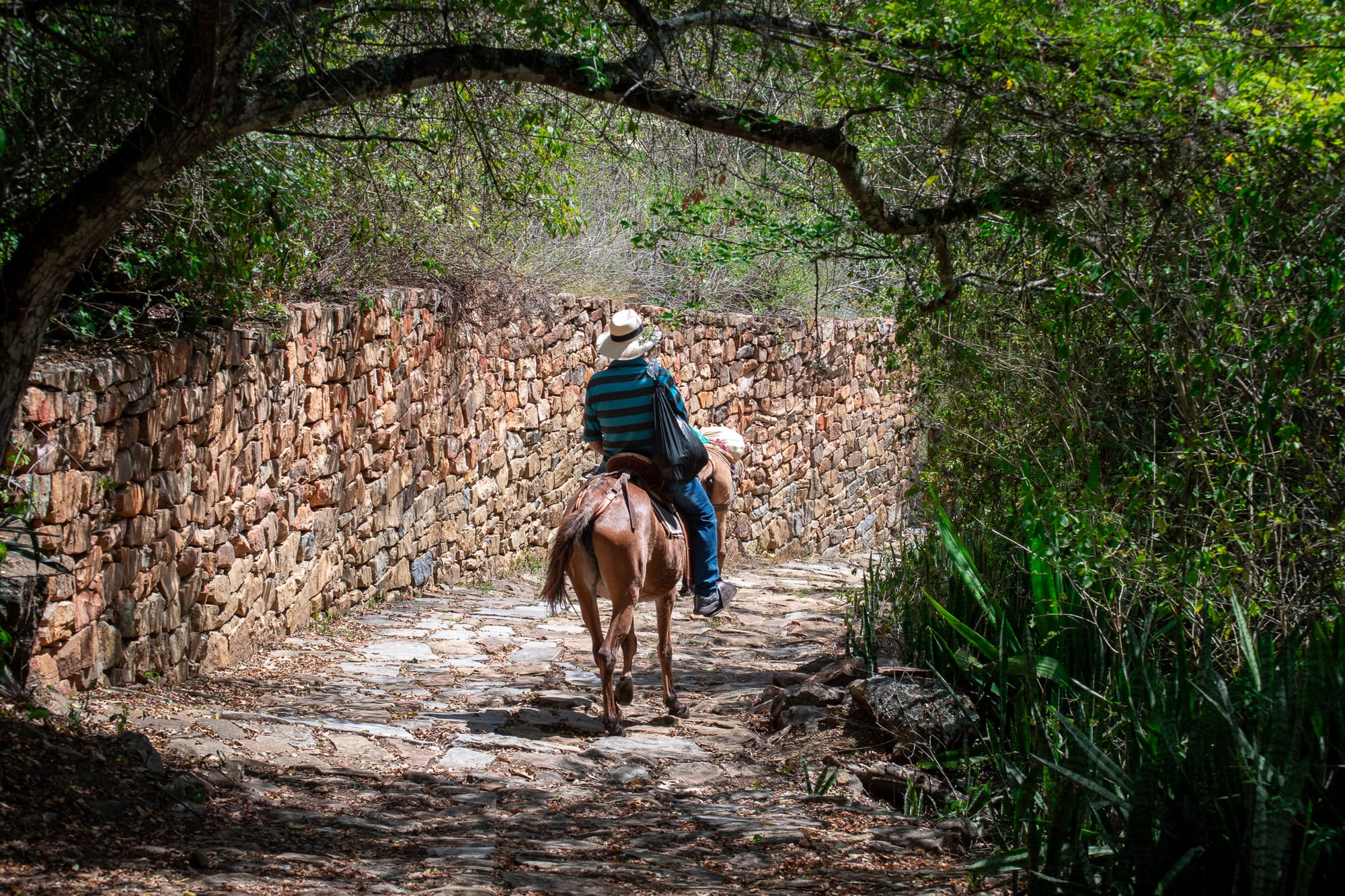
After an intense two-hour hike, we triumphantly reached Los Santos. The moment was a culmination of not only our physical and mental endurance but also a journey through time, walking the path laid down by Lengerke. My parents’ arrival to take us back to Bucaramanga marked the end of our adventure, enveloping us in the warmth of homecoming.
The Camino de Lengerke, part of the extensive Caminos ancestrales de Santander network, had been our companion through diverse landscapes, challenging climbs, and enriching cultural encounters. As we conclude this chapter of our journey, we reflect on the impact of Lengerke's vision and the enduring legacy of his work. This experience was more than a hike; it was a walk through history, an exploration of Colombia's natural wonders, and a testament to the enduring human spirit.
Our adventure on the Lengerke Trail has come to an end, but the memories and lessons it imparted will stay with us as we continue Taking on the World. We hope our story inspires you to explore, to seek adventures that are not just about the destination but also about the journey and the stories that lie along the path.
